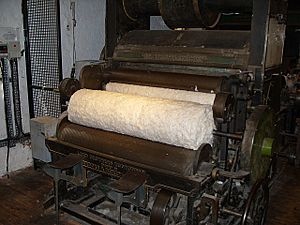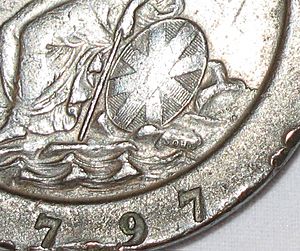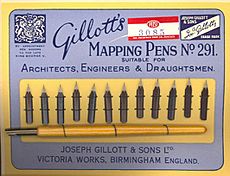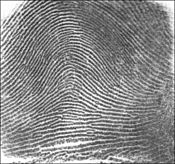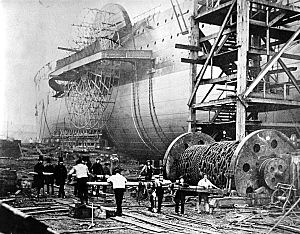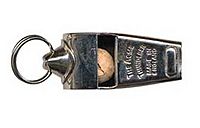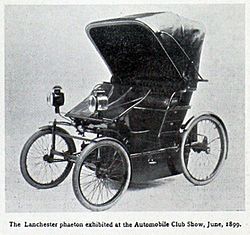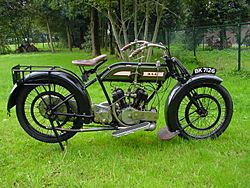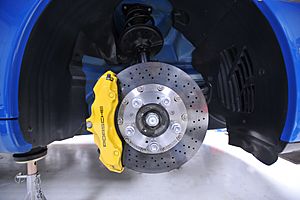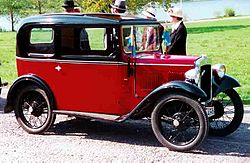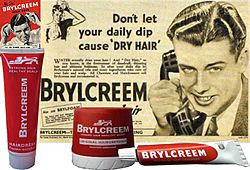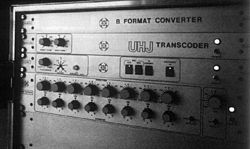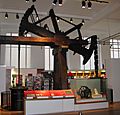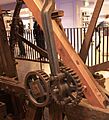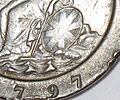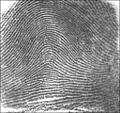Science and invention in Birmingham facts for kids
Birmingham is a famous city in England, known for its factories and amazing inventions. People once called it the 'city of a thousand trades' because so many different things were made here. In 1791, a writer named Arthur Young even said Birmingham was "the first manufacturing town in the world."
For a long time, Birmingham was a top industrial city in Britain and maybe even the world. New ideas in steam power and engineering from Birmingham helped factories everywhere. The city made all sorts of things, especially metal items.
Even in the year 2000, a huge number of new inventions in the UK came from around Birmingham. An expert from the Patent Office said that people in the area just seem to have lots of great ideas and work hard to make them happen.
This article shares some of Birmingham's many inventions and scientific achievements. It shows how diverse and powerful the city's industries have been, and still are today!
Contents
Early Inventions (Before 1600s)
Birmingham's journey as a place of trade and new ideas really started in the 1100s. This was when the De Birmingham family expanded the local market. The Birmingham Bull Ring market began to grow, and people needed to make good products to sell there and elsewhere.
Medieval crafts in Birmingham included making textiles, working with leather, and shaping iron. We also know that people made pottery, tiles, and things from bone and horn. The town grew fast, and small factories, like those making special local Deritend ware pottery, started up.
Later, Birmingham became known for metal working, especially small, valuable items like jewellery. These items were so well-known that people in London talked about them without needing an explanation.
Birmingham's first famous writer was John Rogers. He put together and edited the 1537 Matthew Bible, which was the first complete official Bible printed in English. It became very important for later versions, like the Authorized King James Version.
By the early 1500s, Birmingham was already a big town for making weapons. In 1538, a churchman named John Leland wrote about passing through a street in Birmingham:
"In it dwells smiths and cutlers... There be many smiths in the towne, that use to make knives and all manner of cutting tools, and many lorimers that make bittes, and a great many naylours, so that a great part of the towne is maintained by smiths..."
This shows how many metalworkers lived in Birmingham.
Birmingham lost its main ruler in the 1500s. This meant the people had more freedom to do business and live as they chose. This freedom was a big reason for Birmingham's future growth.
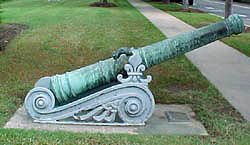
In 1642, Nathaniel Nye, a mathematician and astronomer from Birmingham, published an almanac. It was calculated exactly for Birmingham, showing how important the town was becoming.
During the English Civil War, Birmingham's smiths made over 15,000 sword blades for the Parliamentarian army. Nathaniel Nye also tested a Birmingham cannon in 1643 and experimented with a saker cannon. He later became a master gunner and wrote a book called The Art of Gunnery, believing that war was a science.
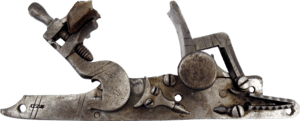
The first clock makers came to Birmingham from London in 1667. Between 1770 and 1870, there were more than 700 clock and watch makers in the town!
In 1689, Sir Richard Newdigate asked Birmingham manufacturers to supply small arms to the British Government. After a successful test in 1692, the government placed its first order. By 1693, five local gun makers were producing 200 "snaphance musquets" each month. Birmingham became the main supplier of guns for the growing British Empire in the 1700s.
Amazing 1700s Inventions
In the 1700s, Birmingham became a hub of new ideas.
- 1722: Richard Baddeley, an ironmonger, patented a way to cast wheel parts and box irons.
- 1727: Thomas Warren, a local businessman, opened a bookshop. He was an important person in Birmingham at this time.
- 1732: The Birmingham Journal newspaper started from Thomas Warren's bookshop. It might have been Birmingham's first weekly newspaper.
- 1733: Thomas Warren published Samuel Johnson's first original writing. Johnson later wrote A Dictionary of the English Language (1755), which was a huge achievement and very important for the English language.
- 1738: Lewis Paul and John Wyatt from Birmingham patented the roller spinning machine. This machine made cotton thread more even. Their idea later became the basis for Richard Arkwright's famous water frame.
- 1741: John Wyatt also designed a cart-weighing machine. It was very simple, efficient, and accurate. This design became popular across England, greatly improving how things were weighed.
- 1741: The Upper Priory Cotton Mill opened. It was the world's first factory to spin cotton using machines.
- 1742: John Baskerville patented a new way to make metal mouldings using rollers instead of screws.
- 1746: A sulphuric acid factory opened in Steelhouse Lane. It used a new method called the lead chamber process.
- 1748: Lewis Paul invented the hand-driven carding machine. This invention was later improved by Richard Arkwright and Samuel Crompton.

- 1757: The beautiful Baskerville serif typeface was designed by John Baskerville in Birmingham. This font is still used today.
- 1758: Paul and Wyatt improved their roller spinning machine. Richard Arkwright later used this as a model for his water frame.
- 1758: Benjamin Franklin visited Birmingham to meet important people. He later returned to do experiments with Matthew Boulton on electricity and sound. Franklin was a link between many early members of the Lunar Society.

- 1762: Matthew Boulton opened the Soho Foundry engineering works. His partnership with Scottish engineer James Watt was key to the Industrial Revolution. They made the steam engine into a powerful machine for factories. Watt even invented the term "horsepower".

- 1765: The Lunar Society started as a dinner club for important thinkers in Birmingham. These people, including scientists and business owners, met regularly until 1813. They helped connect scientific ideas with practical technology, which was vital for economic growth.
- 1767: Matthew Boulton and other Lunar Society members decided to build a canal from Birmingham. This started the Birmingham Canal Navigations, which helped transport goods.
- 1770: James Watt put the first screw propeller on an early steam engine in Birmingham. This began the use of screws for moving boats.
- 1775: Ketley's Building Society was founded, becoming the world's first building society. Midland Bank (now HSBC) and Lloyds Bank also started in Birmingham.
- 1777: Boulton and Watt built 'Old Bess', a very important steam engine.
- 1779: James Keir patented a new metal that could be shaped when hot or cold. It was great for making bolts, nails, and ship coverings.
- 1779: Matthew Wasbrough designed the Pickard Engine. This was the first steam engine in the world to create spinning motion directly using a crank and flywheel.
- 1779: James Watt patented a copying press, or 'letter copying machine'. This was the first widely used copy machine for offices and was very successful for over 100 years. It's seen as the original photocopier.
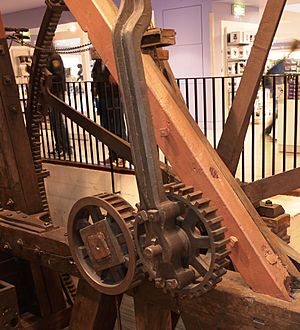
- 1781: James Watt started selling his rotary-motion steam engine. This new engine could power all sorts of machines, not just water pumps. Within 15 years, there were over 500 Boulton & Watt steam engines in British factories.
- 1784: James Watt mentioned a two-speed transmission in a patent for steam carriages. This idea of changing speed in gearing was a seed for all future gear systems.
- 1785: William Withering published a book about the Foxglove plant. He showed how it could be used as a cardiac medicine, Digitalis.
- 1785: James Watt and William Murdoch invented the oscillating cylinder and double action engine. Watt also created a governor and throttle valve to control steam engines automatically.
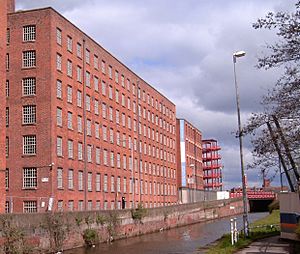
- 1788: Boulton and Watt built the rotative steam engine, which could smoothly drive many different machines.
- 1790: W. Richardson published The Chemical Principles of the Metallic Arts. This book helped deal with diseases linked to metalworking.
- 1794: Ralph Heaton patented a steam-powered machine to mass-produce button parts. This was an early example of mechanical mass production.
- 1797: Matthew Boulton set up a complete coin-making factory at Soho. He made coins for various companies and countries, and new copper coins for Britain. He also patented a way to raise water using a hydraulic ram.
- 1799: The first bellcrank engine, a compact engine, was patented by William Murdoch.
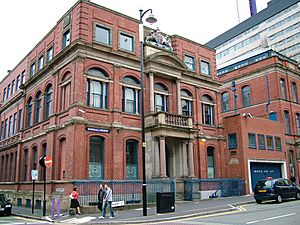
Matthew Boulton wanted to make high-quality silver plate items. But there was no assay office in Birmingham to test and stamp silver. He had to send items far away, risking damage or copies. Boulton fought hard to get an assay office in Birmingham.
- 1773: The Birmingham Assay Office opened on August 31. This made Birmingham a top producer of silver items for three centuries. You can still visit the Assay office today.
- 1793: A "gentleman of the name of Hand" patented a way to make flexible leather with a glaze that made it waterproof. This was an early form of patent leather.
Around this time, John Heard invented a stand-alone cooking range or stove. It could roast, boil, bake, and heat a room. This might have been the first of its kind, as earlier stoves needed a chimney to work.
1800s: A Century of Progress
- 1802: The outside of the Soho Foundry was lit with gas lighting by William Murdoch. This started Birmingham's huge gas industry.
- 1811: Henry James patented a way to move boats by steam using a paddle wheel. This helped boat pushers avoid hard work in canal tunnels.
- 1814: Thomas Dobbs invented a reaping machine with a circular saw to cut grain.
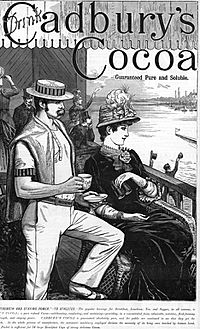
- 1824: John Cadbury began selling tea, coffee, and drinking chocolate in Birmingham. He later made a variety of cocoa and chocolates in a factory. The company, 'Cadbury Brothers of Birmingham', grew huge. They even supplied chocolate to Queen Victoria. Cadbury's is now one of the world's largest chocolate makers.
- 1828: Josiah Mason improved a cheap, easy-to-use nib for fountain pens.
- 1830: William Joseph Gillott, John Mitchell, and James Stephen Perry found a way to mass-produce strong, cheap steel pen nibs. This made Birmingham a world leader in pen making. By the 1850s, more than half of the world's steel pens were made in Birmingham. This helped more people learn to read and write.
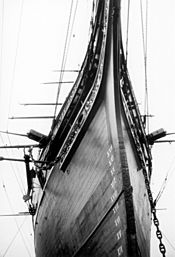
- 1832: Muntz metal was patented. This brass alloy was cheaper than copper but worked just as well for covering the bottom of boats to prevent growth. It was famously used on the Cutty Sark ship.
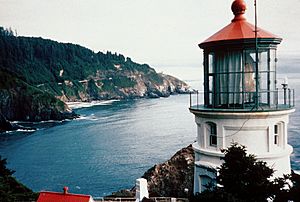
- 1832: William Chance invested in his brothers' glass works, which became Chance Brothers. They became one of Britain's greatest glass makers. They made advances in optical lenses and lighthouse illumination. They glazed the original Crystal Palace and the Houses of Parliament. They even made windows for the White House in America.
- 1837: Bird's Custard was first made by Alfred Bird because his wife was allergic to eggs. Bird's custard powder later became famous worldwide.
- 1839: Rowland Hill from Birmingham campaigned for a new postal system. He is credited with inventing the basic ideas of the modern postal service, including the postage stamp.
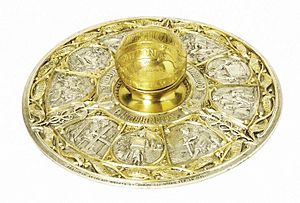
- 1840: George Elkington and Henry Elkington started the English electroplating industry in Birmingham. They helped John Wright discover how to electroplate with gold and silver.
- 1845: Birmingham engineer John Inshaw built the first twin-screw canal steamers. His "Pioneer" steamer was so successful that speed limits were put on British waterways.
- 1847: William Stroudley, a student of John Inshaw, became one of Britain's most famous steam locomotive engineers.

- 1849: William Tranter patented improvements to firearms, winning awards.
- 1849: Sir Francis Galton from Birmingham created some of the first weather maps. He also studied fingerprinting and helped make it useful in science.
- 1851: John Nettlefold bought rights to a screw-making machine. With Birmingham's mass production methods, Nettlefold & Chamberlain became Britain's top screw-making firm.
- 1854: Birmingham chemist Thomas Allcock invented the porous plaster for pain relief in New York.
- 1857: Joseph Sturge bought a sugar estate and turned it into a lime production plant. This led to the production of citric acid in Birmingham.
- 1858: When the huge SS Great Eastern steam ship couldn't be launched, Isambard Kingdom Brunel used Richard Tangye's powerful hydraulic rams to get the job done.
- 1859: The first ever game of lawn tennis was played in Edgbaston, Birmingham. International tennis is still played there today.
- 1856: The first celluloid, a material for making objects, was invented by Alexander Parkes. This was later called the first plastic and was used for things like movie film.
- 1862: Alexander Parkes showed his thermoplastic Parkesine at the Great International Exhibition in London. The London Science Museum calls it "generally accepted as the first plastic."
- 1865: The steel wire for the first successful Transatlantic telegraph cable (16,000 miles long!) was made by Webster and Horsfall in Birmingham.
- 1865: Joseph Hinks patented improvements to oil lamps, creating the Duplex Lamp. It became popular worldwide, especially for railway workers.

- 1876: William Bown patented a design for roller skates wheels that kept the moving and fixed parts of an axle separate. This technique is still used in cars and machines today.
- 1878: Joseph Hudson made the first whistle ever used by a football referee. He later invented the first police whistle in 1883, which is still used today. In 1884, he invented the 'Acme Thunderer', the world's most successful whistle.
- 1880: Gamgee Tissue, a surgical dressing with cotton wool and gauze, was invented by Joseph Sampson Gamgee. It was the first use of cotton wool in medicine and greatly helped prevent infections. Gamgee also invented the aseptic technique, which means performing procedures under sterile conditions.
- 1881: Birmingham businessman John Skirrow Wright invented the postal order, which spread worldwide.
- 1877: John Richard Dedicoat invented the bicycle bell. He was also a bicycle manufacturer.
- 1883: Lawson Tait, a surgeon, performed the world's first successful operation on a ruptured ectopic pregnancy.
- 1884: John Berry Haycraft discovered that the leech secretes a powerful anticoagulant called hirudin.
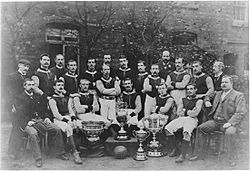
- 1885: The world's first professional football league was founded in Aston, Birmingham, by William McGregor, a director of Aston Villa.
- 1891: The Dunlop Rubber Company opened its factory, Fort Dunlop, in Birmingham. It became a huge maker of car and airplane tires.
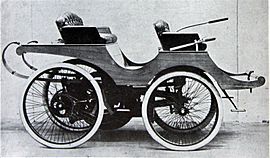
- 1895: Frederick William Lanchester and his brother built the first petrol-driven four-wheeled car in Britain. Lanchester also experimented with fuel injection and invented the accelerator pedal.
- 1895: Herbert Austin, who worked at Wolseley, became interested in cars. He later formed the Austin Motor Company in 1905, which became very famous.
- 1896: The first radiograph (X-ray image) used in surgery was taken in Birmingham by Major John Hall-Edwards. This started a whole new field of medical science.
- 1897: The Reynolds Tube Company patented a process for making bicycle tubes that were thicker at the ends. This allowed for strong, lightweight bicycle frames. Reynolds still makes frames in the city today.
20th Century: Modern Innovations
Birmingham continued to be a center for invention in the 1900s.
By 1900, Birmingham had the most bicycle makers in Britain. Many advances in bicycle design happened here. Many bicycle companies later started making motorcycles and cars.
Companies like Wolseley, Lanchester, Austin, and BSA had major factories in Birmingham. They made motorcycles, buses, tractors, cars, tanks, and airplanes. Other companies like Dunlop Rubber (tires) and Lucas Industries (electrical parts) also grew to support the car industry.
- 1900: Bournville Village Trust was founded by George Cadbury. This improved living and leisure for factory workers across Britain.
- 1900: John Wright invented a much-improved gas fire that used fireclay to radiate heat.
- 1902: The first caliper-type automobile disc brake was patented by Frederick William Lanchester in Birmingham. It was used on Lanchester cars. Later, in 1929, Girling and New Hudson further developed disc brakes for racing cars.
- 1902: George Andrew Darby patented the first electrical heat detector and smoke detector.
- 1903: Birmingham-born Bertram Hopkinson became a professor at Cambridge and researched tank armor.
- 1903: Francis William Aston from Birmingham discovered the Aston Dark Space in electronic tubes. He later invented the mass spectrograph, which helped him identify many isotopes. He won the Nobel Prize in Chemistry in 1922.
- 1905: A manually powered vacuum cleaner was invented by Walter Griffiths of Birmingham.
- 1905: Herbert Austin started making cars at Longbridge. The Austin 7 car, launched 17 years later, became one of Britain's most popular cars. Its design influenced car brands worldwide, including BMW and Nissan.
- 1906: Thomas Watts Coslett of Birmingham developed the parkerizing process. This method protects steel from rust and wear, and is often used on firearms.
- 1908: Pockley Automobile Electric Lighting Syndicate sold the world's first electric car lights set, powered by an 8-volt battery.
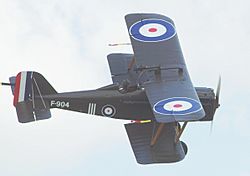
Birmingham's metalworking skills helped in making lightweight tubes for early airplanes. Companies like Austin and Wolseley Motors built hundreds of early aircraft for the British Air Force, including the S.E.5 biplane fighter. During World War II, Birmingham factories built Spitfires, Hawker Hurricanes, and Avro Lancasters.
- 1910: J. R. R. Tolkien began creating his first Elfin tongue while at school in Birmingham. Tolkien grew up in Birmingham and considered himself a 'West Midlander'. His famous book The Lord of the Rings continues to inspire art, music, films, and games worldwide.
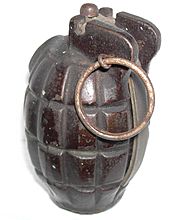
- 1910: Oliver Lucas's company designed an electric car vehicle horn, which became standard.
- 1915: William Mills developed the "safe grenade", called the Mills bomb. It was adopted by the British Army in 1915, and 75 million were made during World War I.

- 1919: The airbag "for the covering of aeroplane and other vehicle parts" was first patented in the United States by two Birmingham dentists, Harold Round & Arthur Parrott.
- 1922: Birmingham rubber maker Dunlop invented a tyre with steel rods and a canvas casing that lasted three times longer than other tires. Dunlop tires helped cars win races and break land speed records. Foam rubber was also invented at Dunlop's labs in 1929.
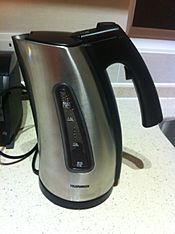
- 1923: Arthur L. Large invented the immersed heating resistor, a big step forward for the electric kettle. A safety valve was added by Walter H. Bullpitt, also from Birmingham, in 1931. These two inventions are the basis of modern electric kettles.
- 1928: Oscar Deutsch opened his first Odeon Cinema near Birmingham. The "Odeon" chain became one of Europe's largest.
- 1928: The George Tucker Eyelet company in Birmingham produced a type of "cup" rivet, which later became the "POP rivet".
- 1929: Brylcreem, a famous hair styling product, was invented in the city.
- 1932: The Birmingham Sound Reproducers (BSR) company was set up. They made auto-changing turntables, which became the basis for the popular Dansette record player. BSR eventually made 87% of the world's record player turntables.
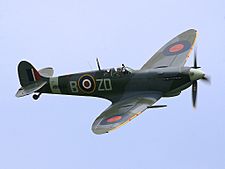
- 1932: Leonard Parsons was the first to use synthetic vitamin C to treat scurvy in children.
- 1934: The Reynolds Tube Company introduced the double-butted tube-set 531 for strong, lightweight bicycle frames. This material was used in many winning Tour de France bikes.
- 1935: Chad Valley, a toy company in Birmingham, was appointed Toy Makers to the Queen. They made many improvements in toy manufacturing.
- 1937: Professor Norman Haworth won the Nobel Prize for Chemistry for his work on carbohydrates and synthetic vitamin C.
- 1939: Dr Mary Evans and Dr Wilfred Gaisford began trials of the world's first antibiotic M&B to treat lobar pneumonia.
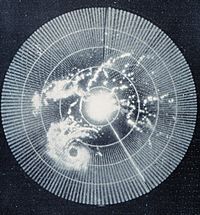
The magnetron, a key part of radar, and the first microwave power devices were developed at the University of Birmingham during World War II. The microwave oven exists because of these developments.
- 1940: The Castle Bromwich Aircraft Factory started making Spitfire fighter planes. It became the largest Spitfire factory in the UK, building over half of the 20,000 Spitfires made.
- 1940: The Frisch–Peierls memorandum, which described how an atomic explosion could be made, was written at Birmingham University.
- 1944: Anthony Ernest Pratt patented a board game called 'Murder', which later became the famous mystery game 'Cluedo'.
- 1946: Chance Brothers produced the first all-glass syringe with parts that could be swapped. This allowed for mass sterilization.
- 1947: Dunlop tires helped John Cobb set a world land speed record of 630 km/h in the Railton Special, which is now in Birmingham's Thinktank museum.
- 1947-1951: Professor Peter Medawar researched skin graft rejection at Birmingham University. He won the Nobel Prize for Medicine in 1960 for his work on immunological tolerance.
- 1950: The first 'hole-in-the-heart' operation in England was performed at Birmingham Children's Hospital.
Conway Berners-Lee, a mathematician from Birmingham, helped develop the Ferranti Mark 1, the world's first commercial electronic computer. His son, Tim Berners-Lee, later invented the World Wide Web.
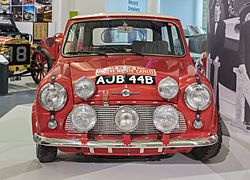
- 1952: Professor Charlotte Anderson helped prove that gluten in wheat causes coeliac disease, leading to gluten-free diets.
- 1954: The Stewart platform (a parallel robot) was first used. It has many uses, including flight simulation.
- 1950s: Important research on heart pacemakers and plastic heart valves was done by Leon Abrams at Birmingham University.
- 1959: The Mini car began production at Birmingham's Longbridge plant. It became a British icon of the 1960s and was voted the second most influential car of the 20th century.

- 1962: Maurice Wilkins, who grew up in Birmingham, received the Nobel Prize for his work on DNA structure. He was one of the "Code Breakers."
- 1962: The Birmingham-made Mellotron musical instrument was manufactured in Aston. It became very important in popular music, used by bands like The Beatles and Led Zeppelin.
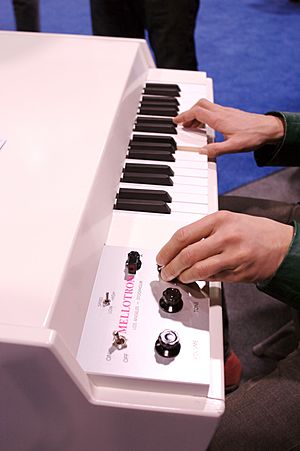
- 1965: The Birmingham Press and Mail installed an early example of a call centre in the UK.
- 1969–1970: Heavy metal music began to form. Many early influential heavy metal bands, like Led Zeppelin and Black Sabbath, came from Birmingham.
- 1975: Birmingham inventor Michael Gerzon co-invented the Soundfield microphone. He also played a big part in inventing Ambisonics, a multi-channel sound recording technique.
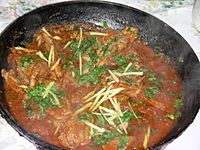
Balti cuisine became nationally famous after growing in Birmingham in the late 1980s. Today, Balti restaurants are popular everywhere.
Sir John Robert Vane, who won a Nobel Prize in Physiology or Medicine in 1982 for his work on aspirin, studied at the University of Birmingham.
- 1991: Derek McMinn began the first successful modern metal-on-metal hip resurfacing operations.
21st Century: Continuing Innovation
- The University of Birmingham is now a major UK research center for nanotechnology.
- As of 2013, Aston University was researching things like micro-robotic drills for surgery and using fibre optics in aircraft fuel tanks instead of electric sensors.
Images for kids
-
Deritend ware pottery
-
Frontispiece of Nye's New Almanacke and Prognostication for 1642
-
17th-century European saker cannon
-
External view of a cocked 17th century snaphance lock on musket
-
Model of a water frame inspired by Lewis Paul and John Wyatt's early cotton spinning mnachine
-
A restored carding machine at Quarry Bank Mill in the UK.
-
Birmingham on the cusp of the Industrial Revolution in 1732
-
Industry and Genius, 1990, by David Patten, sculpture dedicated to John Baskerville in Centenary Square
-
Meeting of the Lunar Society late 18th century, possibly at Soho House
-
Soho House from the front. The house is now a museum free to patrons under 16.
-
Old Bess, as now preserved in the Science Museum, London
-
Birmingham became a town of commerce with two of the big four banks founded in the town. Lloyds bank was founded in 1765, the world's first building society Ketley's was founded in 1775, and Midland Bank (now owned by HSBC was founded in 1836). Pictured is the Edgbaston branch of Lloyds Bank, Five Ways, Birmingham
-
Boulton & Watt engine of 1788. The 'sun and planet gear' (also called the 'planet and sun gear') was a method of converting reciprocal motion to rotary motion and was utilised in a reciprocating steam engine
-
The first steam powered Cotton Mills such as this Murrays' Mill in Greater Manchester were powered by 40 hp Boulton and Watt beam engines. Richard Arkwright pioneered Watt's rotary-motion steam engine in his cotton mills and within 15 years there were 500+ Boulton & Watt steam engines in British factories and mines.
-
Birmingham Assay Office was fought for by Boulton and it changed the fortunes of silver making in the town and can still be visited today.
-
Muntz metal was used in maritime vessels such as the hull of the Cutty Sark, Its original application was as a replacement for copper sheathing placed on the bottom of boats and is still used today for corrosion resistant machine parts.
-
Heceta Head Lighthouse in Oregon. The Chance Brothers Fresnel lens, built in the early 1890s, is still in operation at this historic light station. Chances became one of the foremost glass makers in the world, pioneering the use of glass in items such as UV lenses and glass syringes. Another famous lighthouse Split Point Lighthouse in Australia uses a Birmingham-made Fresnel lens but the factory was bombed during war-time and the essential formulae for making the unique lens crystal were lost
-
An 1868 Webley & Scott Revolver. Birmingham has a long history of arms manufacture. By the 19th century, the introduction of the percussion system combined with the adoption of modern production methods led to Birmingham becoming the dominant producer in British firearms with its own Gun Quarter.
-
George and Henry Elkington were awarded the first patents for electroplating in 1840. These two then founded the electroplating industry in Birmingham from where it spread around the world.
-
One of William Stroudley's locomotives. Stroudley spent seven years studying in Birmingham under John Inshaw before becoming one of Britain's most famous steam locomotive engineers.
-
Sir Francis Galton created some of the first weather maps in order to devise a theory on storm systems. These proved popular with the British public when first printed in newspapers.
-
Sir Francis Galton studied fingerprints for ten years, publishing a detailed statistical model of fingerprint analysis and identification and encouraged its use in forensic science.
-
Isambard Kingdom Brunel turned to Richard Tangye to help launch the SS Great Eastern in 1858. Tangye later designed, built and exported all types of engines, jacks and pulleys across the world.
-
The modern game of lawn tennis was invented in Edgbaston by Augurio Perera and Harry Gem.
-
Celluloid as a bulk material for forming objects was invented in 1856 by Alexander Parkes, it was later described as generally the first plastic and is used in various subsequent inventions, most notably movie film.
-
Birmingham has a long history of wire and cable manufacture, the industry set various international standards for wire gauges and the city became one of the foremost producers of wire for musical instruments in Europe. In 1865 the first successful Transatlantic telegraph cable was made by Webster and Horsfall, who also improved the manufacture of piano wire (giving them a near monopoly).
-
Skateboard wheels owe their existence to William Bown and Joseph Henry Hughes, who patented a design for the wheels of roller skates that kept the two bearing surfaces of an axle, fixed and moving, apart. This technique is still used today in automobiles and machinery.
-
Joseph Hudson invented the world's most successful whistle to date, the 'Acme Thunderer' (the first ever pea whistle). Other firsts for Hudson include the introduction of the football referee whistle and the police whistle.
-
Dr Joseph Sampson Gamgee pioneered the use of cotton wool in the first medical context as Gamgee Tissue and his cottonwool gauze is still essential in the treatment of wounds today. The common sticking plaster (invented by Earle Dickson of New York in 1924) was based on Gamgee's gauze, however, Birmingham chemist Thomas Allcock invented a porous plaster for the relief of pain in New York as early as 1854.
-
The world's first Football League was founded in Birmingham by William McGregor in 1885, McGregor was a director of Aston Villa (pictured in their 1883-4 strip). Villa were very successful around this time, before money and international players dictated top flight success.
-
Frederick William Lanchester and his brother built the first petrol driven four-wheeled car in Britain. The Lanchester Motor Company went on to pioneer many advances in engineering.
-
During the late 19th century, Birmingham, Coventry, Wolverhampton and West Bromwich engineering companies were at the forefront of the burgeoning automobile and motocycle industries. Early horseless carriages such as the 1899 Lanchester Phaeton (pictured) were made possible in the region thanks to an existent array of metalwork and engineering skills that were mainly evolving out of the bicycle industry.
-
An early radiograph. The first radiograph used to assist in surgery was taken by the pioneer of medical X-rays, Major John Hall-Edwards.
-
Out of Birmingham's bicycle manufacturers, there emerged a plethora of cutting edge automobile and motorcycle brands. Motorcycles from New Hudson, Revere, Beardmore, Sun, Ariel, Norton, Rex-Acme, Alldays & Onions, Velocette and BSA made Birmingham into an international hub for motorcycle manufacture. At its peak, BSA was the largest motorcycle producer in the world and engineers such as James Lansdowne Norton pioneered engineering in the city, helping Birmingham-made motorbikes to win many awards for speed and quality.
-
Reynolds bicycle frames are extremely lightweight and have been used in several winning Tour de France bikes. Reynolds still manufactures frames in the city today.
-
Porsche Carrera S composite ceramic brake, perfected over one hundred years after the original patent is taken out by Frederick William Lanchester
-
An electric glow discharge tube featuring its most important characteristics: (a) An anode and cathode at each end (b) Aston Dark Space (c) Cathode glow (d) Cathode dark space (also called Crookes dark space, or Hittorf dark space) (e) Negative glow (f) Faraday space (g) Positive column (h) Anode glow (i) Anode dark space.
-
In 1905 Herbert Austin began making cars at his new Longbridge plant, seventeen years later the Austin 7 went into production, it was one of the most popular cars ever produced for the British market, its effect on the British market was similar to that of the Model T Ford in the USA. It was also licensed and copied by companies all over the world. The very first successful BMW car, the BMW Dixi, was a licensed Austin 7. In Japan Nissan also used the 7 design as the basis for their original cars. Many Austin 7s were rebuilt as "specials" after the Second World War, including the first Lotus, the Lotus Mk1, which was based on an Austin 7.
-
The S.E.5 biplane fighter was built by Austin and Wolseley Motors in Birmingham. The city produced 2081 S.E.5s. Brum also produced Spitfires, Hawker Hurricanes, Fairey Battle light bombers, Mercury and Pegasus aero engines, Short Stirling four-engined heavy bombers and Avro Lancasters during the Second World War.
-
Mills bomb 36M, dating from 1942. The Mills bomb was adopted by the British Army as its standard hand grenade in 1915 and underwent many developments.
-
The first car in the world to travel at over 200 mph was built in nearby Wolverhampton and held the ground thanks to Dunlop's Birmingham-made tyres. Dunlop tyres were used on subsequent record breaking vehicles and became a popular choice for racing cars such as Formula 1.
-
The electric kettle has changed little since the invention of an immersed heating resistor and the safety valve both by Birmingham firms.
-
Speed in the Workshops - Speed in the Air, March 1944 Geo Tucker Eyelet Co. advert for pop rivets, featuring Spitfire aircraft
-
During the Second World War, Castle Bromwich Aircraft Factory was the largest Spitfire factory in the UK, producing a maximum of 320 aircraft per month, it built over half of the approximately 20,000 aircraft of this type. Despite being bombed, BSA made nearly 500,000 Browning guns during the Second World War, many of which were fitted to Spitfires.
-
Major advances in radar take place at the University of Birmingham during the Second World War
-
The original Mini is considered a British icon of the 1960s and has since been voted the second most influential car of the 20th century, behind the Ford Model T.
-
The structure of part of a DNA double helix. Birmingham raised and educated, Maurice Wilkins received the Nobel Prize for his work on DNA structure, he is one of three who became known as the Code Breakers.
-
The Birmingham-made Mellotron has played a vital part in popular music since the 1960s, being used by artists such as The Beatles, The Rolling Stones and Led Zeppelin.
See also
- Industrial Revolution
- Scientific revolution
- Chemical revolution
- Jewellery Quarter
- Gun Quarter
- Birmingham pen trade
- Textile manufacture during the Industrial Revolution
- History of Birmingham
- History of trade and industry in Birmingham





